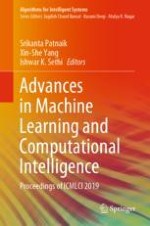2021 | OriginalPaper | Buchkapitel
Online Hostel Management System Using Hybridized Techniques of Random Forest Algorithm and Long Short-Term Memory
verfasst von : S. Suriya, G. Meenakshi Sundaram, R. Abhishek, A. B. Ajay Vignesh
Erschienen in: Advances in Machine Learning and Computational Intelligence
Verlag: Springer Singapore
Aktivieren Sie unsere intelligente Suche, um passende Fachinhalte oder Patente zu finden.
Wählen Sie Textabschnitte aus um mit Künstlicher Intelligenz passenden Patente zu finden. powered by
Markieren Sie Textabschnitte, um KI-gestützt weitere passende Inhalte zu finden. powered by
